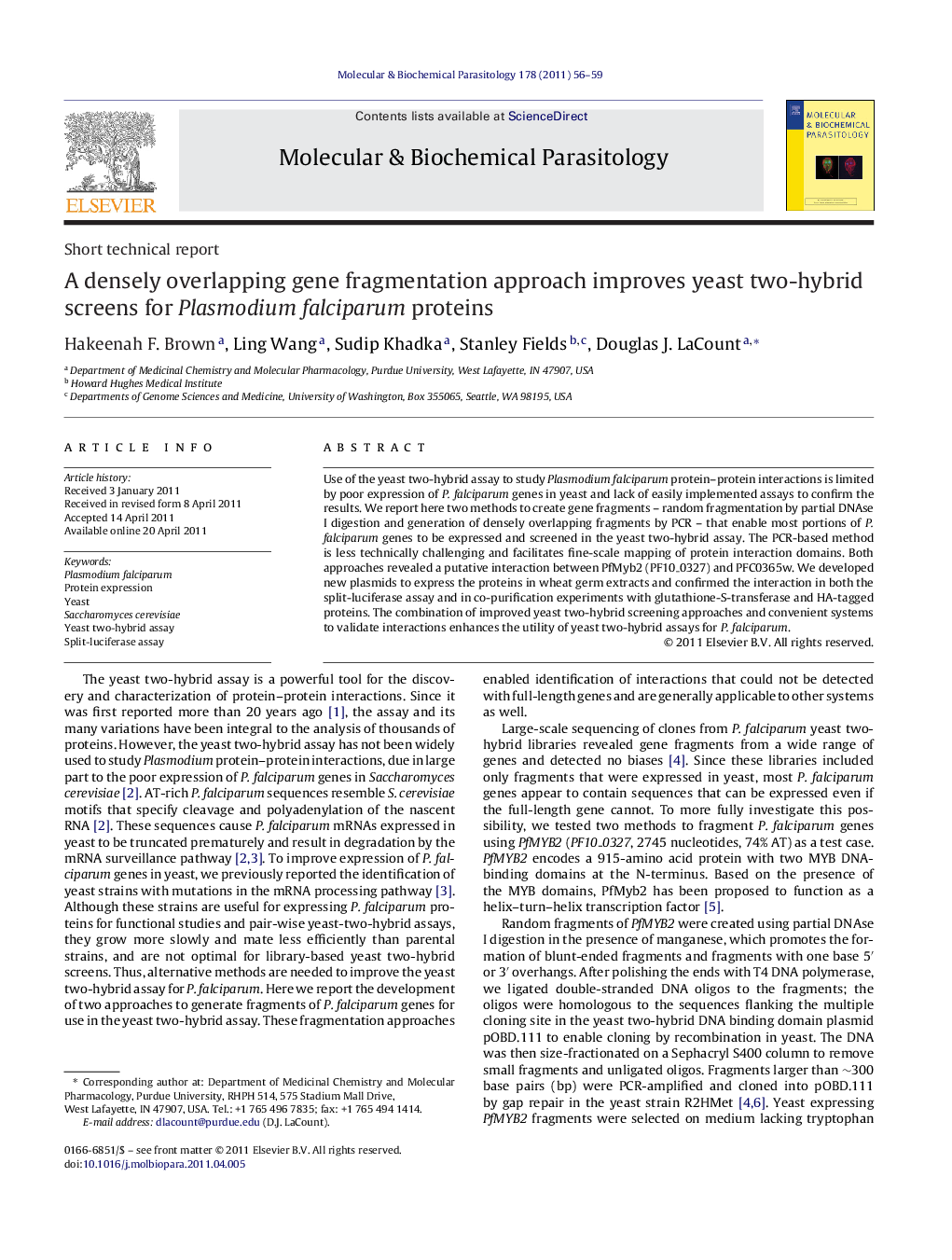| Article ID | Journal | Published Year | Pages | File Type |
|---|---|---|---|---|
| 2829923 | Molecular and Biochemical Parasitology | 2011 | 4 Pages |
Use of the yeast two-hybrid assay to study Plasmodium falciparum protein–protein interactions is limited by poor expression of P. falciparum genes in yeast and lack of easily implemented assays to confirm the results. We report here two methods to create gene fragments – random fragmentation by partial DNAse I digestion and generation of densely overlapping fragments by PCR – that enable most portions of P. falciparum genes to be expressed and screened in the yeast two-hybrid assay. The PCR-based method is less technically challenging and facilitates fine-scale mapping of protein interaction domains. Both approaches revealed a putative interaction between PfMyb2 (PF10_0327) and PFC0365w. We developed new plasmids to express the proteins in wheat germ extracts and confirmed the interaction in both the split-luciferase assay and in co-purification experiments with glutathione-S-transferase and HA-tagged proteins. The combination of improved yeast two-hybrid screening approaches and convenient systems to validate interactions enhances the utility of yeast two-hybrid assays for P. falciparum.
Graphical abstractWe developed methods to improve yeast two-hybrid screens of Plasmodium falciparum proteins and new plasmids to facilitate confirmation of protein–protein interactions.Figure optionsDownload full-size imageDownload high-quality image (210 K)Download as PowerPoint slideHighlights► We fragmented the Plasmodium falciparum PfMYB2 to improve expression in yeast. ► Fragmentation enabled binding partners to be identified in the yeast two-hybrid assay. ► New plasmids streamlined validation in pulldowns and the split-luciferase assay. ► The PfMyb2 protein interaction domain is not conserved.
